Many of us already know about the famous Untitled Goose Game, where a crazy goose chases personal property owners by honking continuously.
If not in-game, some people might experience real-life geese in their backyard honking repeatedly. Not only honk, but they also dispose of droppings, and sometimes even become more aggressive.
So, how do you deal with the excess amount of goose community? Some groups of people hunt them down to reasonably decrease them in number. But that’s not a humane solution at all. Then, how to get rid of geese?
We will tell you how. But for this, you have to read this article till the end and find out yourself. Let’s figure out now.
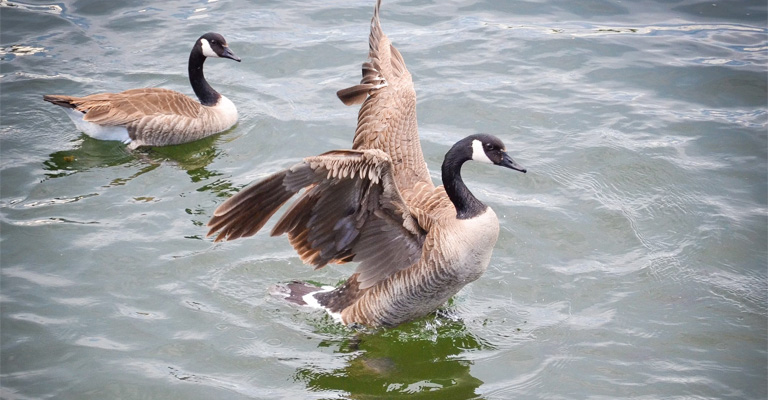
How to Get Rid of Geese?
Goose generally pack in groups and are usually not so aggressive. However, when it’s their nesting season, this might not be the case. During this time, they become more chaotic and aggressive.
While the waterfowl can be beautiful and interesting to observe, they can also become a nuisance due to their droppings, and loud honks. But don’t worry! We will help you get rid of the disturbing angry goose, also by not being harmful to them. Don’t forget they are also a part of our nature.
Figure Out the Problem
Before you even try and manage the geese, why do you have them in your area first? Goose are particularly attracted to,
- Water Sources: Geese are aquatic birds and are naturally drawn to bodies of water, such as ponds, lakes, and rivers.
- Open Place: Large, open spaces like parks and golf courses are ideal grazing areas for geese.
- Is the Food Abundant? Geese primarily feed on grasses, grains, and aquatic plants. Naturally, areas with abundant vegetation are attractive to them.
- Is Your Area Safe? Geese prefer areas with minimal disturbances and a clear line of sight. They usually look for a place that is safe from predators.
- Getting Closer to Nest: They return to the same nesting sites year after year. So areas with suitable nesting sites are likely to attract them.
Now, you know what might attract the geese. Now that you know, it’s time to eliminate the problem. Let’s get started.
1) Control the Habitat
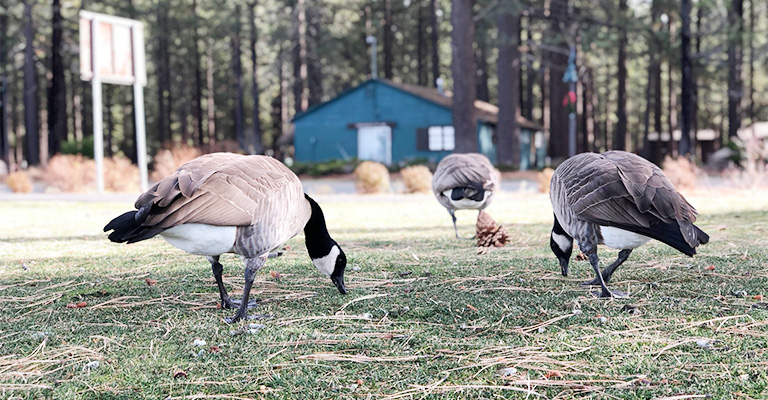
You should get started by managing the vegetation. Regularly mow and trim grasses. It will surely make your property look less appealing, and not a food source for them. Geese are generally afraid of tall grasses. You can think of planting them too to keep them away.
Additionally, you can go for the natural buffer zones along the water edges with tall and native vegetation. Floating barriers such as booms or floating islands can fit right to this point. It will prevent the geese from easy access to water and hence keep them away.
2) Thought of Decoys?
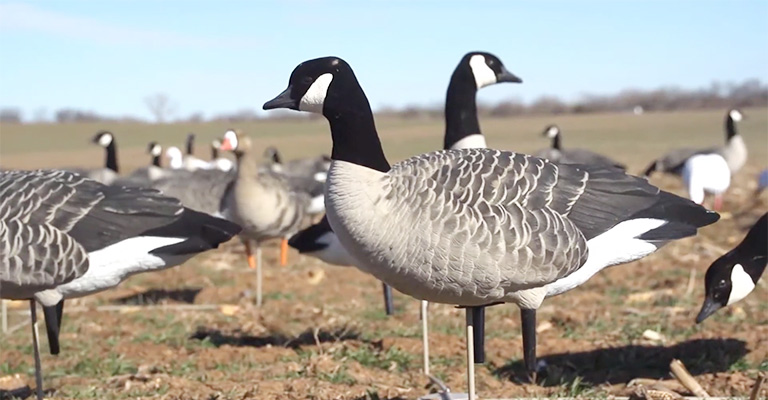
Like we place scarecrows in our cropping fields, you can also do the same here. Plastic owls and coyotes are available near you. You only have to look for them.
You can place these predator decoys near or in areas where geese are frequent. It would be a plus point if you can manage dynamic and reflective decoys.
You can additionally use noisy deterrents like propane cannons, reflective tape, flags, balloons, and motion-activated alarms to disrupt geese and discourage them from settling in your area.
3) Build A Wall
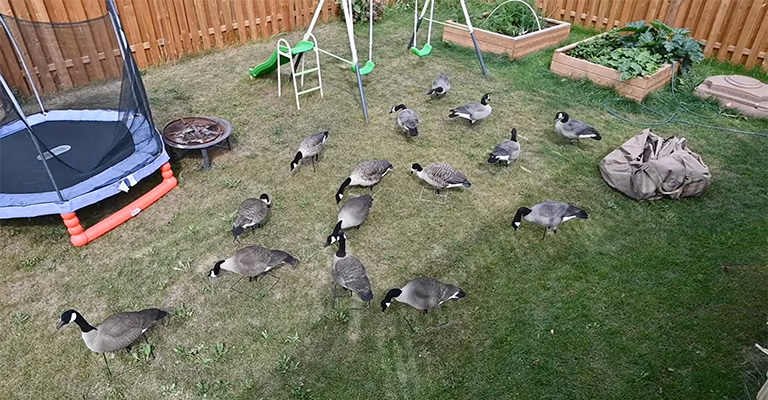
Not like the Great Wall of China but you can definitely manage low-cost fences and nets to prevent geese access. Insert low-profile fencing or netting around water bodies and areas where geese congregate.
You can also protect valuable plants like this using bird nets or wire mesh. It’s budget-friendly and sustainable compared to other methods of getting rid of the goose.
4) Develop Awareness
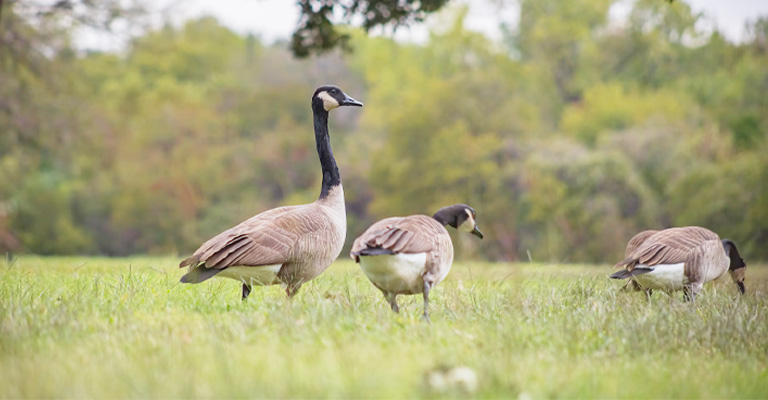
Often we feed the geese in our locality regularly because it feels cute! But it can backfire on us. You can gather the residents and visitors of your locality in a place and build awareness in them. And tell them the consequences of feeding geese.
Plus, the foods that we offer are not always healthy for them. For example, bread can often seriously harm the geese. You can also work with local wildfire firms and start egg and nest management programs to control the geese population more humanely.
5) Non-lethal Hazing Strategies
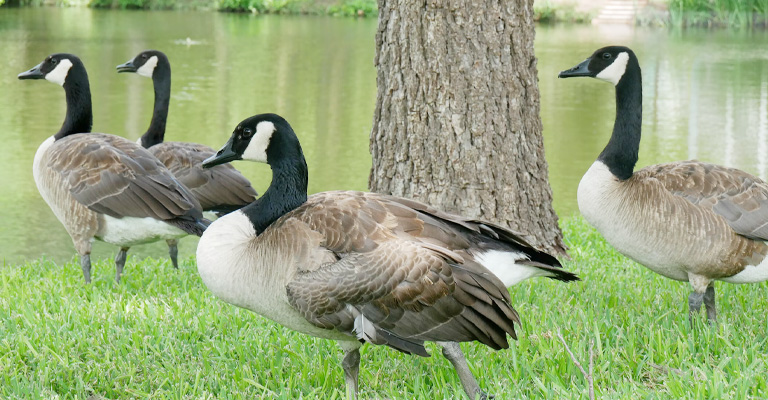
In other terms, hazing means harrasments. Non-lethal hazing strategies often trigger the geese’s sense of security and they ultimately decide to move on to another place. Professionals can offer you humane bird control services.
Additionally, they might also come up with trained dogs and other non-lethal techniques such as pyrotechnics, mylar tape, and lasers to drive away the community of geese.
Will Swans Keep Geese Away?
Some people may think of keeping swans to replace the disturbing geese. So, if nothing works out, can swans do the rest?
Swans are defensive creatures you can use as a last resort. They might be enough to drive away the migratory geese. Learn more about bird migration here. However, they won’t be enough for the Canadian native geese.
So, what’s your pick here? Are you seriously annoyed with the noisy geese in your area? You can undoubtedly use any of the techniques mentioned here.
Last Words
It can be a serious challenge to completely withdraw the geese’s presence in your area without having to harm the wildlife. But you should focus on the issue with more humane and environmentally responsible methods.
It is, indeed, possible to strike a balance that allows both humans and geese to coexist peacefully. Ultimately you should aim to replace the beautiful birds at the same time respect their place in our shared environment.
We believe our article served the purpose quite well. Let us know in the comment section how many goose challenges are you dealing with. We can help you with that too.
Also, don’t forget to share our article with your local friends and help them protect the peace of your region. Between you and the honks, the peace should be yours!